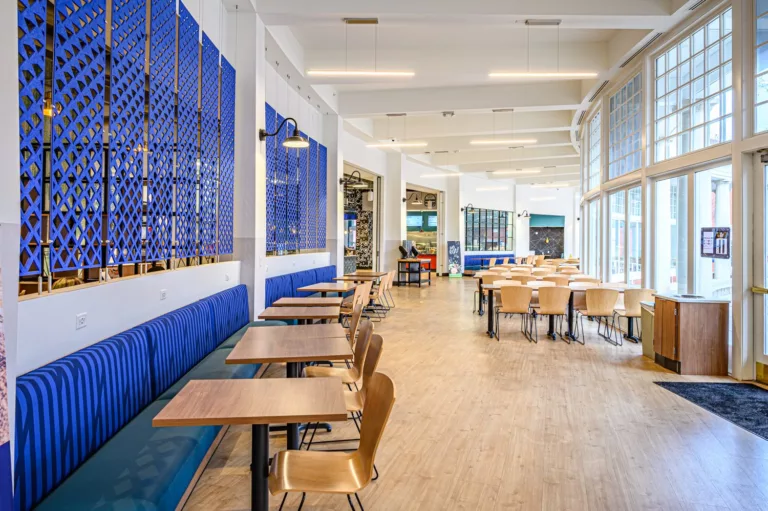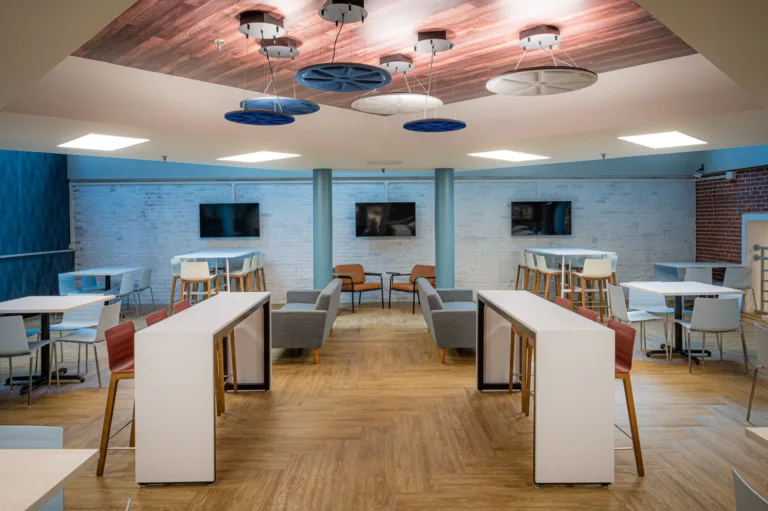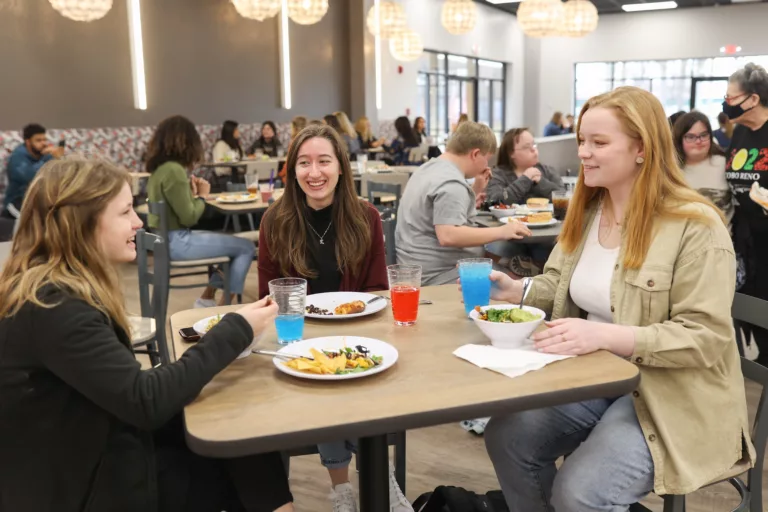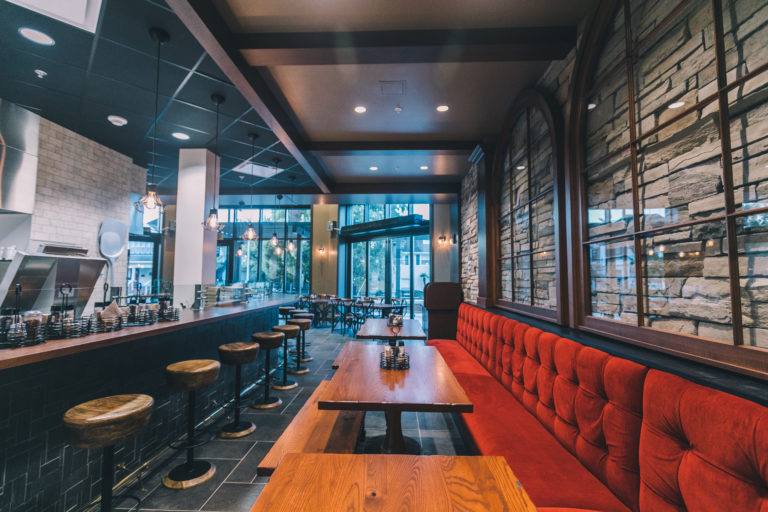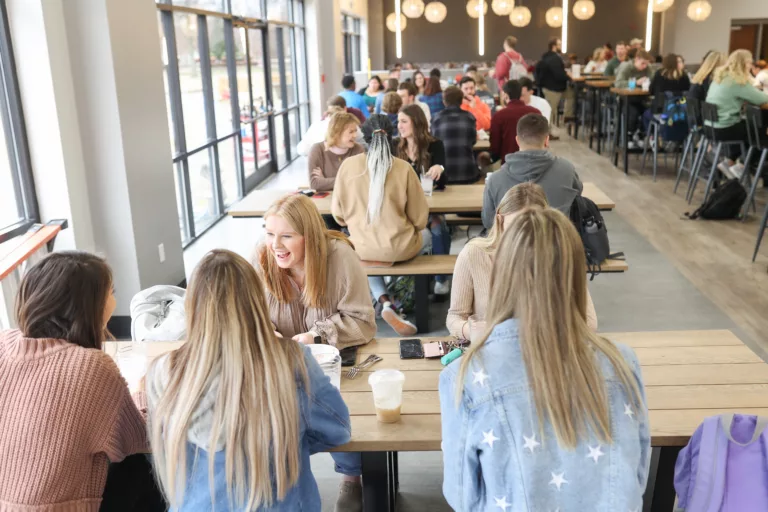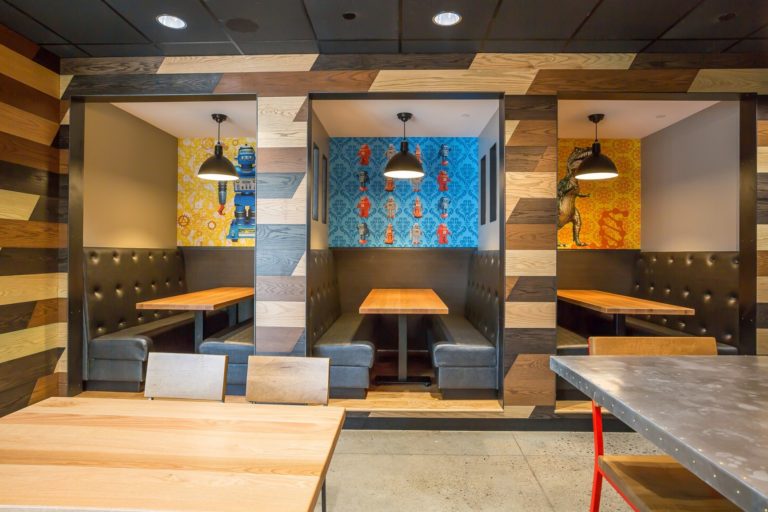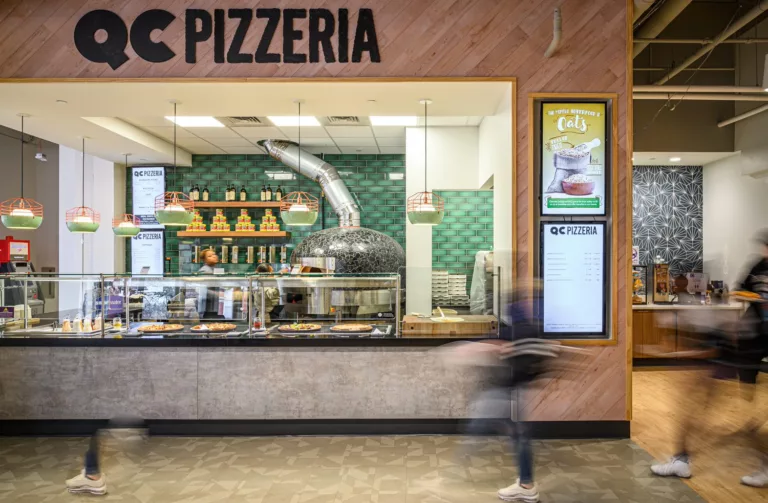
When it comes to designing a college cafeteria space, there are several important factors to consider. As a commercial space design company, your goal is to create an environment that is welcoming, functional, and flexible. In this blog post, we’ll explore some key design elements that can help you achieve these goals and create a space that meets the needs of college students.
Study Areas/Eating Areas
One of the most important design elements to consider when designing a college cafeteria space is the balance between study areas and eating areas within the cafeteria space. While students will likely use the space for both activities, it’s important to create distinct zones within the space to accommodate both. Consider using different types of seating or table arrangements to create separation between these zones.
Mixed Height Tables
Another important design element to consider when designing a college cafeteria space is the use of mixed height tables. These tables can be used to create different zones within the space, which can help to accommodate different types of activities. For example, taller tables can be used for standing and socializing, while lower tables can be used for eating or studying. Mixing heights also helps to create visual interest and variation within the space.
Community Seating Areas
Community seating areas can be used to create a sense of community within the space and encourage socialization among students. One approach is to create long, communal tables that can seat several people at once. This can be particularly effective for larger groups or for events where students want to gather together.
Private Areas
While community seating areas are important, it’s also important to create private areas within the space. These areas can be used for studying, small group meetings, or simply for students who prefer a more quiet environment. Consider incorporating booths or smaller tables into the design to give students more privacy.
Lounge Areas
In addition to community seating areas and private areas, it’s also important to create lounge areas within the cafeteria space. These areas can be used for relaxation, socialization, or simply as a place to take a break from studying. Consider incorporating comfortable seating, such as sofas or armchairs, into the design to create a more relaxed atmosphere.
Designing a college cafeteria space requires careful consideration of several key design
elements. By incorporating mixed height tables, community seating areas, private areas, lounge areas, and distinct study/eating areas, you can create a space that is functional, flexible, and welcoming for college students. Our goal is to create a space that meets the needs of our colleges while also providing an exceptional experience for their students. With these design elements in mind, you can create a college cafeteria space that achieves both goals.

